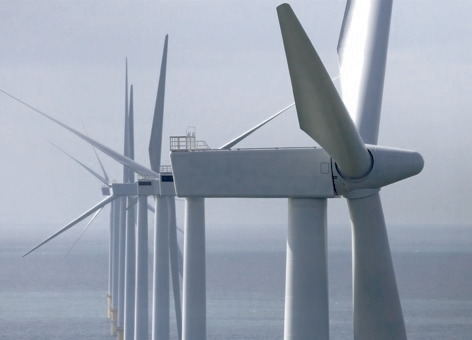The future of the electricity system is at the heart of current debates about energy policy. Despite recent controversies, there remains a widely held view that the UK’s ambitious targets for climate-change mitigation require rapid emissions cuts in the electricity sector. The rationale is that this will make reducing emissions in transport and heating easier to achieve. At the same time, a significant proportion of the UK’s ageing power plant fleet is due to close in the near future due to tighter emissions regulations. These imperatives have provided a strong rationale for reforms to the electricity market to support investment in low-carbon electricity generation – and to match this with a renewed commitment to energy efficiency.

The main options for electricity-system decarbonisation are now the subject of explicit government strategies and policies. Dedicated offices have been set up within the Department of Energy and Climate Change (DECC) tasked with supporting nuclear power, renewable energy, carbon capture and storage, energy efficiency and unconventional fossil fuels. The compatibility of the development of unconventional gas with the government’s own climate targets is, of course, hotly debated.
In effect, the government is following a diverse approach to the low-carbon transition – an approach that has significant advantages. Diversity is one of a number of strategies that can be used to square the transition to a low-carbon energy system with the need to maintain energy security. Diversity doesn’t guarantee energy security, but it can help to mitigate the impacts of some of the key risks to security, including technical failures, extreme weather events, geopolitical tensions and civil unrest.
It’s unlikely that a future low-carbon electricity system will include every option available
So does this mean that the UK needs to pursue all available technological options to meet our climate-change and other policy goals? Not necessarily. Among those who support the government’s decarbonisation targets, opinions differ about the mix of technologies, fuels and other measures that should be prioritised. The differences of opinion are partly due to technical and economic uncertainties, and partly due to social and political preferences of different advocacy groups.
A recent report comparing modelled scenarios from the UK Energy Research Centre concludes that all scenarios show the importance of energy efficiency and deep cuts in electricity-sector emissions by 2030, but also argues that there is considerable uncertainty about the mix of low-carbon electricity-supply technologies that could be deployed. The DECC’s 2050 Pathways Calculator includes scope for even more variety than UKERC’s scenarios. For example, it’s possible to use the calculator to show how the 2050 decarbonisation target could be met without further nuclear power plants but also possible to use it to construct a low-carbon-energy future that includes a significant expansion of nuclear power.
One reason why it may be difficult to sustain a low-carbon transition in which all options play a significant role is path dependency. Path dependency tends to be a feature of electricity systems – and of other large, complex infrastructures. In his book American Genesis, historian Thomas Hughes shows that this path dependency is not just a technical and economic phenomenon. He argues that electricity systems ‘incorporate not only technical and physical things such as generators, transformers and high-voltage transmission lines, but also utility companies, electrical manufacturers and reinforcing institutions such as regulatory agencies and laws’.
Once this combination of technologies and institutions is established, Hughes argues that they tend to favour particular technological options and particular solutions to problems they encounter. The UK electricity system is a good example of this, having been developed using a centralised model, dominated by large-scale power plants and vertically integrated utilities. There were some good reasons for this, including a desire to realise economies of scale. But this history matters to those trying to implement radical reforms today.
Two lessons are particularly important for contemporary policy. First, it is unlikely that a future low-carbon electricity system in the UK will include every possible option available. Even if the economic climate improves, governments, consumers and businesses will be subject to significant budgetary pressures. Second, there is a need to consider path dependency, especially where there is a need to deploy technologies and measures that have not historically been part of the UK electricity system. These include technologies with unfamiliar characteristics, decentralised generation investments and more radical technologies and business models that bridge the divide between electricity supply and demand.
Professor Watson is research director for the UK Energy Research Centre





Nanogenerator consumes CO2 to generate electricity
Nice to see my my views being backed up by no less a figure than Sabine Hossenfelder https://youtu.be/QoJzs4fA4fo